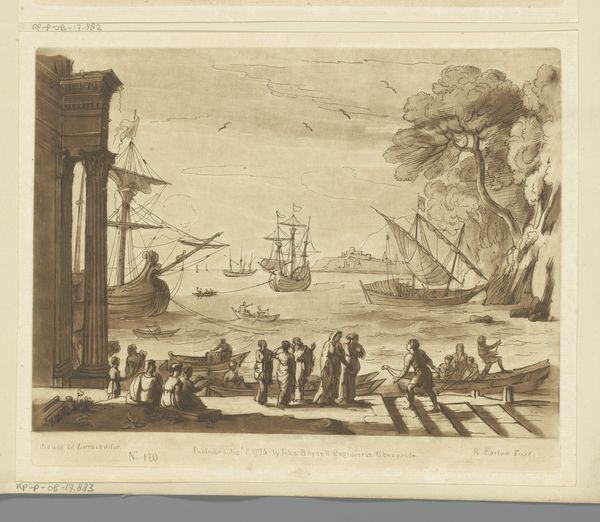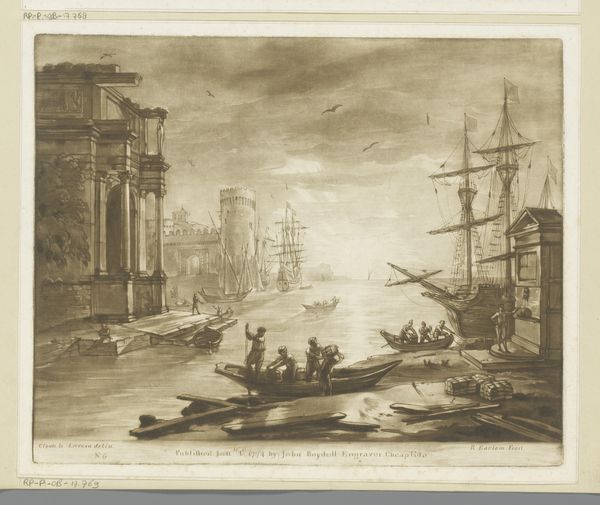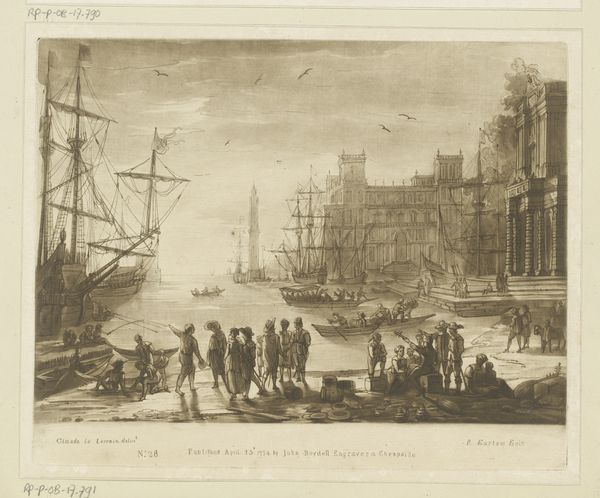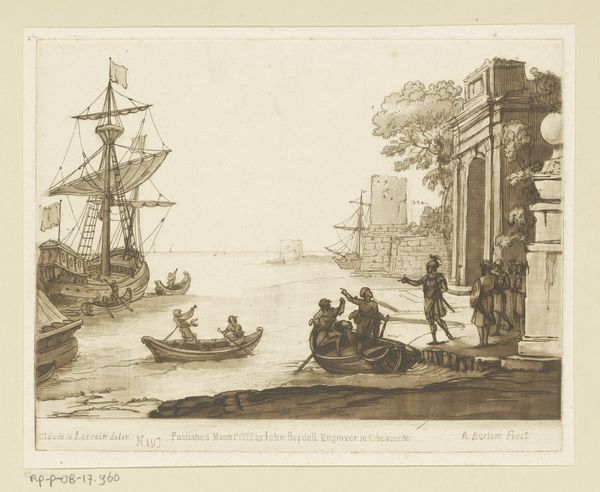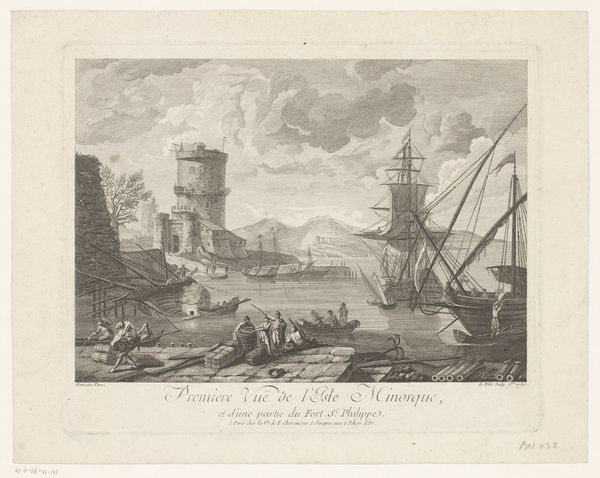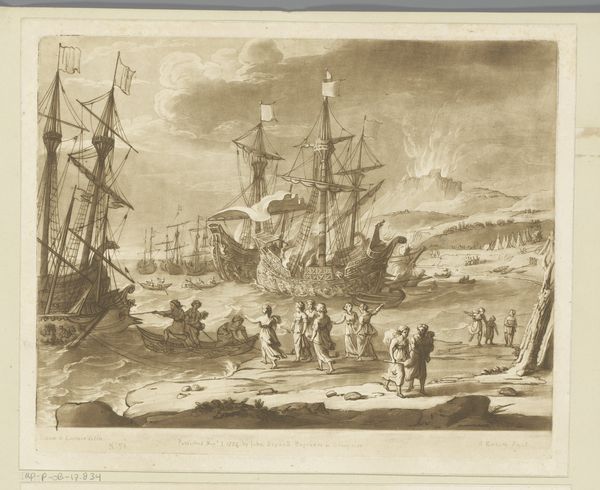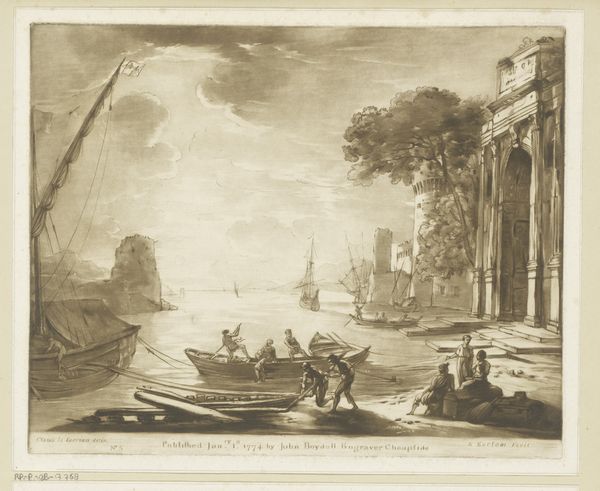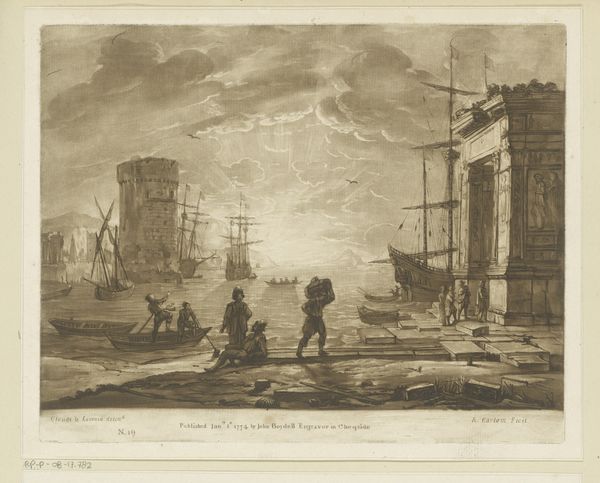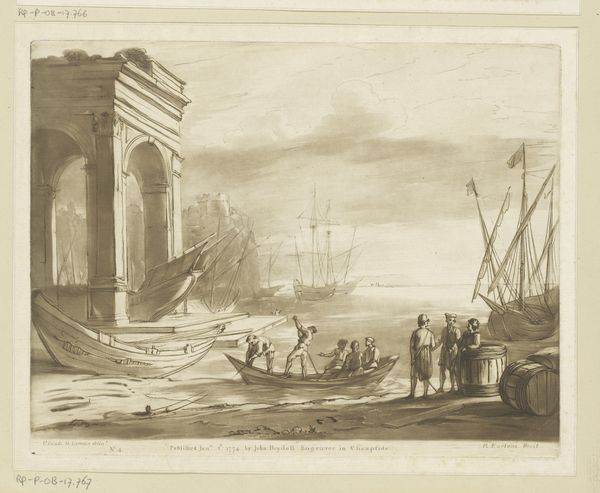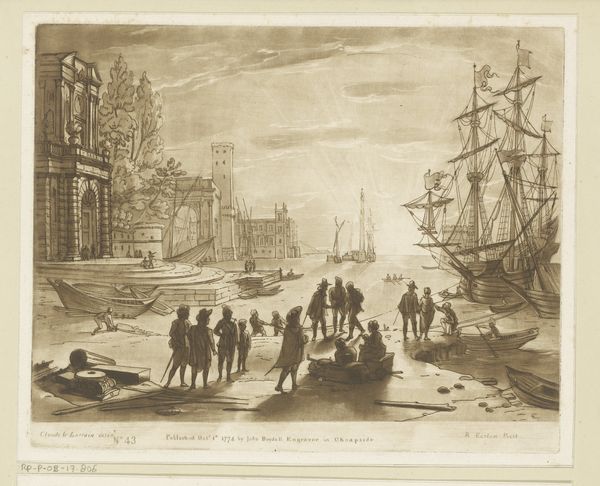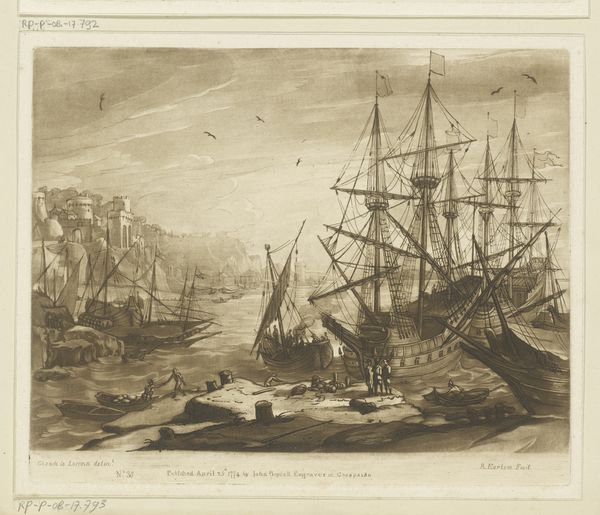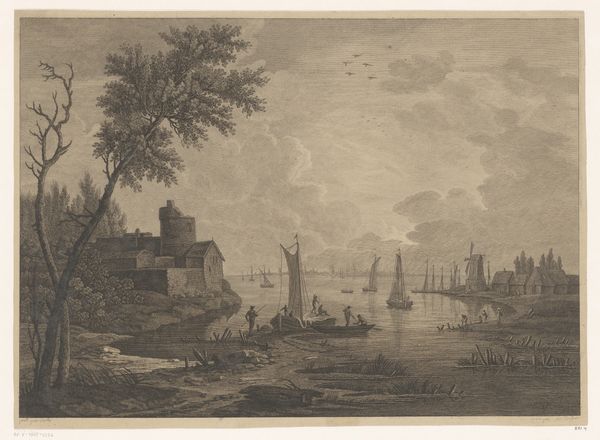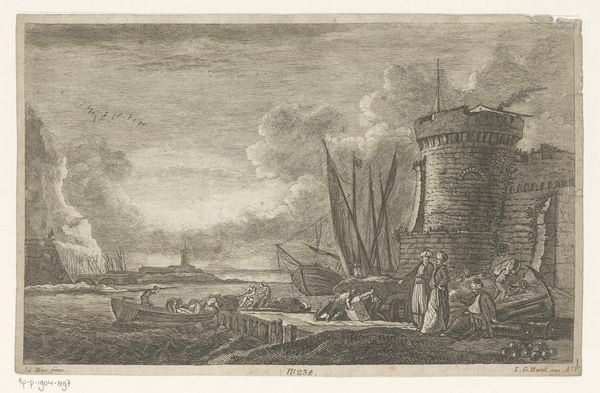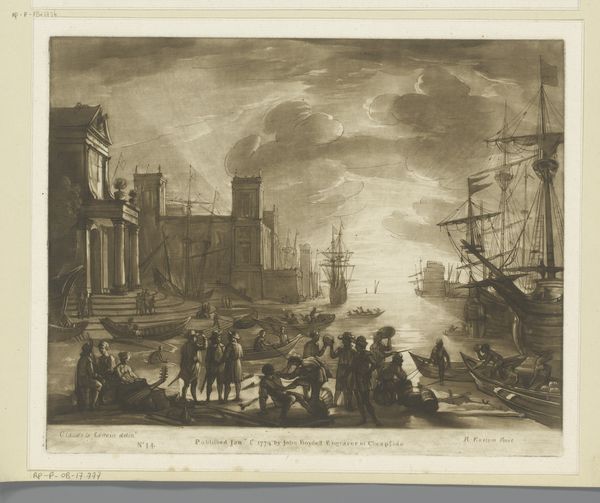
Zeehaven met figuren die koopwaar inladen op een roeiboot Possibly 1774
0:00
0:00
Dimensions: height 206 mm, width 258 mm
Copyright: Rijks Museum: Open Domain
Curator: Here we have "Seaport with figures loading merchandise on a rowboat," a print made around 1774 after a painting by Claude Lorrain. The engraver was Richard Earlom. What are your initial impressions? Editor: Immediately, I'm struck by how balanced the composition is—the weight of the tower on the right answered by the tall ships on the left. The monochromatic tone adds a sense of serene antiquity. But there’s also a real contrast between light and dark creating visual interest. Curator: Exactly. Earlom's print captures the essence of the Baroque era's fascination with maritime trade. These scenes were not merely aesthetic; they celebrated the burgeoning mercantile power of Europe and the colonial project that fueled it. Notice how the workers are depicted relative to the towering architecture and ships: it tells a story about the social hierarchies. Editor: And consider how Earlom achieved that tonality. It’s an engraving, a very precise medium, but look at how he varies the line work. See how densely packed the lines are in the shadows versus how sparse they become in the sky? It almost emulates the atmospheric perspective of a painting. Curator: Good eye! The circulation of prints like this one helped disseminate idealized images of port cities throughout Europe, constructing a shared visual language around trade and prosperity. It definitely projected a particular version of reality to the world. Editor: Yes, it’s a controlled view. Although, observe the detail—how much movement is captured in those small figures, bringing a sense of immediate, working-class reality to the scene. A nice juxtaposition to those far away hills in the distance. Curator: I think that's Earlom consciously positioning viewers in relation to both an ideal past and a very real present—a very Baroque concept, if you will. Editor: I find it striking how a simple print manages to balance structural formality with expressive texture to reveal the values of that world. Curator: Precisely! This artwork invites us to consider the intricate interplay of commerce, social structure, and artistic representation in shaping our understanding of history.
Comments
No comments
Be the first to comment and join the conversation on the ultimate creative platform.
